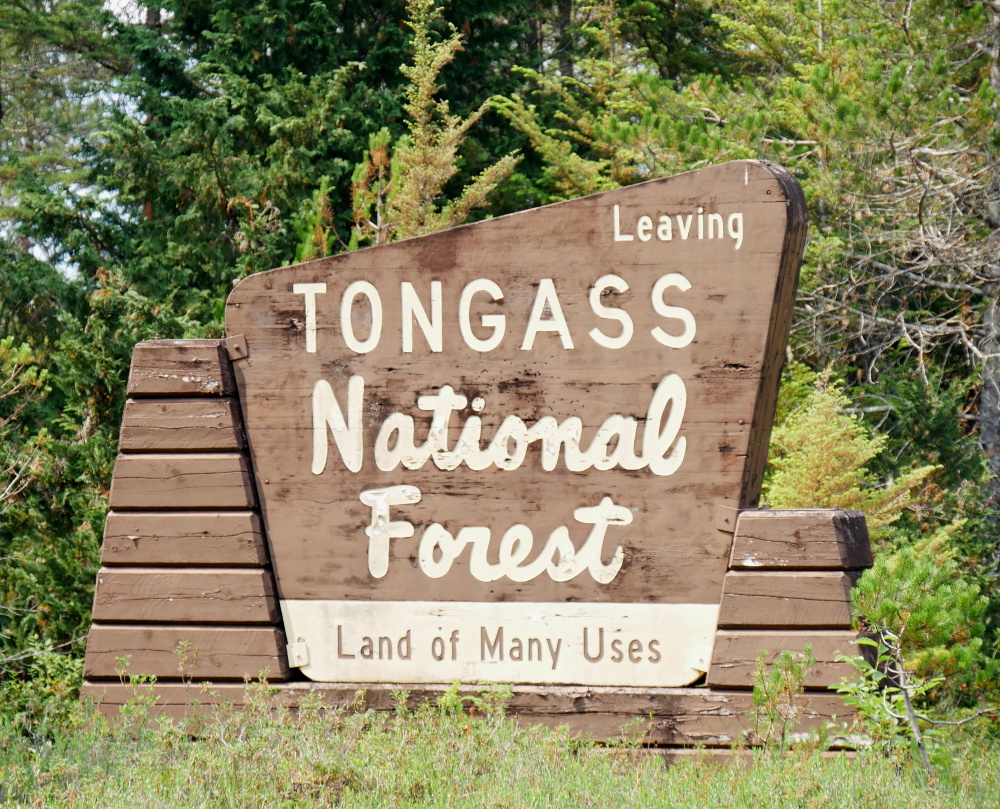
The U.S. Forest Service has released the draft of an environmental review of a 15-year plan for logging, recreation and stream restoration projects around Wrangell, Petersburg and Kake in Southeast Alaska. The review follows the same approach as a larger project on Prince of Wales Island that’s the center of a legal challenge.
The draft Environmental Impact Statement for the Central Tongass Project could mean logging up to 150 million board feet of old-growth timber over 15 years on the islands and mainland of central Southeast. Another 80 million board feet of young growth trees could also be cut during that time.
This project and a much larger offering on nearby Prince of Wales Island make up the bulk of what the federal agency expects to offer for timber sales in Southeast Alaska in the near future.
The Central Tongass project includes a proposed change to the 2016 forest plan, which guides use and development on the Tongass. In order to make logging costs pencil out for timber companies, the agency is proposing to lower its standards for what the forest looks like in four areas. The change would allow more clear cutting there. Areas proposed for that change are near Portage Bay on northern Kupreanof Island, a number of spots on the road system of Mitkof Island, much of northern Zarembo and along the road system of Wrangell Island.
George Woodbury of Wrangell is a board member of the Alaska Forest Association, a timber industry group. He’s hoping to see timber sale offering from this plan that makes sense economically for logging companies.
“Up to now the timber sales and plans and EISs (environmental impact statements) that have been coming out start off with significant volume but the volumes are reduced because of the economics and those economics are driven down because of the prescriptions that the Forest Service has to live with, that they’ve imposed upon themselves,” Woodbury said.
For industry clear cutting is more economical, rather than more selective cutting, or felling only some of the trees in a forest stand. The prescription approach can have long-term benefits for wildlife habitat, soils, watersheds and productivity for trees.
The agency’s analysis justifies relaxing standards saying “very limited capacity for large scenic impacts in areas planned for timber harvest within this project, especially in old-growth areas.”
Rebecca Knight of Petersburg of the environmental group Alaska Rainforest Defenders saidthe plan lacks specifics.
“This is completely devoid of what we call unit cards, you can actually, you have a piece of paper that shows you what’s exactly going on in a particular cutting unit and there’s nothing site specific, nothing site specific about cumulative effects to wildlife, effects to wildlife, on and on and on,” Knight said.
This kind of approach was first used in Alaska for the Prince of Wales Landscape Level Analysis, a much larger timber offering. Conservation groups in May filed suit to block that project over the lack of specifics to the logging plan.
Knight thinks the Central Tongass Project is part of a larger phenomenon.
“It’s not just a matter of this one huge timber sale,” she said. “It’s a matter of this one on top of the tremendous cumulative losses of old growth forest and its fish and wildlife that this planning area has already suffered.”
A Forest Service spokesman declined to be interviewed. But Paul Robbins Jr in Ketchikan provided written responses to KFSK’s questions by email.
As to why the agency is taking the same approach that has generated a lawsuit for the Prince of Wales project, Robbins wrote that the draft EIS “contains specificity regarding the impacts of timber harvesting, recreation and stream restoration activities in keeping with the National Environmental Policy Act.” The exact location of logging and methods are determined during implementation.
He writes the project could support up to 582 jobs from old growth logging and up to 250 jobs from the second growth logging. The timber sales could fund stream restoration work, recreation cabins and trail work. The agency has provided a list of possible work that could happen, depending on that funding. Release of the draft environmental impact statement in early August started a 45-day comment period.









